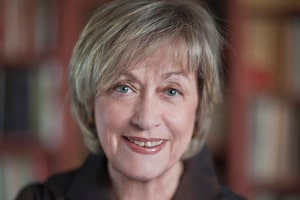"A cabinet that looks like Canada!" Prime Minister Justin Trudeau exclaimed as he introduced his ministers. But this was false on several counts.
A cabinet that includes no one of Italian or Chinese origin, a cabinet without Arabs, a cabinet without a single black person – while Sikhs (who comprise about 1.4 per cent of the Canadian population) hold four cabinet posts – is not a true portrait of Canada. Not that I mind. The last thing a modern government needs is a cabinet that would reflect the exact ethnic makeup of the population. That's because it's impossible to achieve: Ministers are chosen from a caucus that results from the vagaries of politics and doesn't correspond to demographic reality. For example, the Liberals have only a handful of black MPs, two MPs of Chinese descent – and 16 Sikhs, reflecting the active interest of Sikhs in politics and of a pattern of block voting in ridings with a significant Sikh minority.
Mr. Trudeau also prides himself on having formed the first federal cabinet with gender parity. False again. It is actually built on gender inequity. The Liberal caucus counts 134 men and 50 women, meaning that at the outset, every female MP had roughly three chances more than her male colleagues to be appointed to cabinet. Shouldn't gender equity apply to men as well?
Those who want the proportion of female cabinet ministers to reflect the female population should insist that the political parties present many more women in "good" ridings – ridings where they have a real chance of being elected. Then a prime minister would have a larger pool of qualified female MPs to choose from when forming the cabinet.
Mr. Trudeau's cabinet certainly counts prominent women who will play major roles, notably in portfolios such as Justice, Health, Indigenous Affairs, International Trade, Environment. But to achieve parity, he also created five "junior" posts (ministers of state) where he could fit in less-experienced women. So a third of the female ministers were to report to full ministers, with lower salaries, no budget and no signing authority. All male appointees, however, were full ministers.
This is a classic scheme; it was used by former Quebec premier Jean Charest and by recent French prime ministers, when they formed "gender equal" cabinets. Most female appointees assumed smaller portfolios that depended on full-fledged ministers. As soon as Mr. Trudeau's practice was revealed by the media, his office waved a magic wand and turned the junior ministers into senior ones. They will be considered "equal" and receive the same salary, although they will have much smaller responsibilities and will still depend on the resources of larger departments. Equal pay for less work? This smacks of paternalism.
Paternalism is what impregnates the ideology of forced, purely symbolic, gender parity. In a country where women are a majority among university graduates and successfully make their way into all sorts of demanding fields, women don't need this kind of positive discrimination. It is demeaning and insulting.
True, women are still discriminated against in certain areas. But symbols don't change realities. If that were the case, the election of Barack Obama to lead the world's most powerful country would have erased racism in the United States. Unfortunately, it didn't.
Eds Note: An earlier version of this column incorrectly stated there were no Jews in cabinet.
 Lysiane Gagnon
Lysiane Gagnon